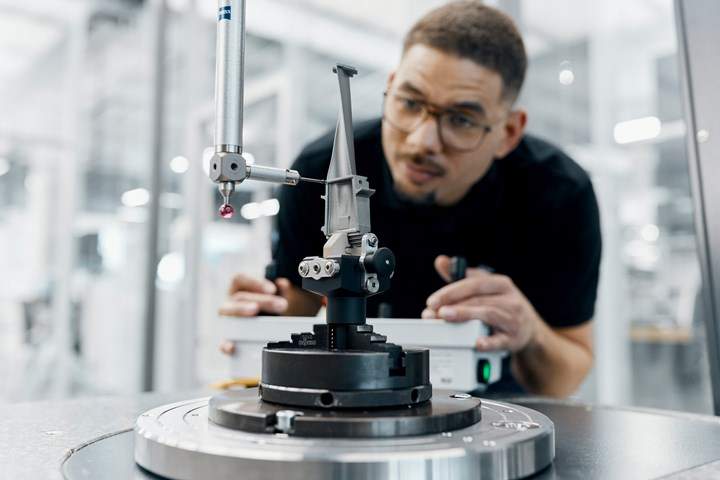CMMs Give Moldmakers Precision, Sustainability, Ergonomic Operation
The new generation of Zeiss Prismo precision measurement devices meet speed, flexibility, sustainability and productivity demands.
A new generation added to the Zeiss Prismo family of coordinate measuring machines (CMM) raise the standards of precision measurement in terms of speed, flexibility, sustainability and productivity. Consistently focused on increasing efficiency without sacrificing measurement accuracy, Zeiss’ four devices deliver maximum accuracy at high measuring speeds thanks to a new definition of the scanning parameters, reduce the carbon footprint and enhance user safety.
Zeiss Prismo devices, which carry a DGUV type certificate, are used when tolerances of a few micrometers or less are specified for components. All four members of the new generation are suitable for use in the controlled environment of a laboratory and in the harsh environment of a production line. All devices can also be combined with the Zeiss Vast Rotary Table Axis option, which enables the axis of the rotary table to be defined almost 75% faster, as reported by the company.
Sustainability, energy efficiency, noise reduction and ergonomic operation are some demands the Zeiss Prismo family meets thanks to numerous new functions. The PowerSaver feature, for example, automatically disconnects Zeiss Prismo from the power supply after a preset time and sets the control to standby. The AirSaver feature switches off the compressed air after a predefined time, thus also saving valuable energy. And the new C99m control unit also reduces power consumption by up to 68% in a normal test cycle.
Improved handling include a more flexible storage option; a new front cover design for easier manual loading of heavy parts on the CMM; and safety laser scanners that enable complete, all-round monitoring of the system and automatically reduce speed in the event of danger.
The Zeiss Prismo product family, consists of Prismo, Prismo fortis, Prismo verity and Prismo ultra.
Related Content
-
Four Micro Tooling Considerations
Issues involving gating, ejection, mold splits and direction of pull are of special concern when it comes to micro tooling.
-
Laser Welding Versus Micro Welding
The latest battle in finely detailed restoration/repair of mold materials.
-
What is Scientific Maintenance? Part 2
Part two of this three-part series explains specific data that toolrooms must collect, analyze and use to truly advance to a scientific maintenance culture where you can measure real data and drive decisions.















